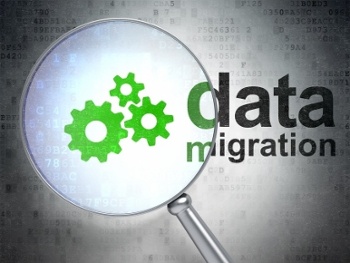Business these days is in the clouds — data clouds, that is. More and more businesses are abandoning their legacy programs for cloud-based solutions, such as Salesforce.com. In their eagerness to be on the cutting edge of technology or from a desire to save time and money, companies can overlook critical aspects of the data migration process. Here are some important things to keep in mind before you migrate your data to the cloud.

- Don’t let technology rule your business. It should serve your business instead. It can be tempting to switch to cloud-based technology just because it is the new thing and “everyone else is doing it.” Keep in mind that data migration is a major process and going from your legacy system to a cloud-based solution is a decision that needs to be based in your business’s needs and objectives. Before upgrading, set aside the technology and re-visit your business goals and methods. How is the new system going to impact them? How can it help your goals and support your methodology better than the old system?
- Don’t forget to actually make changes. In switching to the cloud, many companies make no use of new features and do their best to set up the new system just like the old system. Study the new functionality and features available and alter your methodology to take advantage of them. For example, think of being able to add a dashboard with your business’s top five revenue earners or enjoying a smooth, modern interface on par with the Facebook or Amazon experience instead of a clunky client-server model. Be open to the possibility that moving to the cloud could change the way you do business and be ready to embrace these changes.
- Don’t ignore quality control. New software can do a lot these days, but adopting a cloud-based solution is not going to clean your data for you. Your data should be clean and free of mistakes and duplications before you migrate it. Scrubbed data is less likely to cause delays or issues, but it also makes it easier for users to adopt the new solution and reduces the risk that they will fail to embrace it due to dirty data — which they may incorrectly blame on the new solution. How clean your data must be depends on the nature of your business, and the costs related to scrubbing data depend on a number of factors, including the number of records and how recently the data was acquired as well as the desired level of “cleanliness.”
- Don’t deny users access to writing reports. With most new software models, writing reports is no longer the purview of programmers. Any user can do it, so make sure any user can. This enhances productivity for the users, but it also frees your IT staff for more important duties.
- Do not let a technology shop tell you how to adapt your business practices to conform to the new solution. Choose a true tech partner instead — someone who understands the nature of your business and your specific needs and wants. Technology shops are interested in selling you a particular product, regardless of whether it will perform properly for your business. A true partner is more interested in helping you embrace new technology to increase your revenue and profitability, enhance your customer relationships, improve productivity and reduce your work-related stresses that are being generated by a lack of adequate technology.
- Do not forget to run a pilot project. A pilot project can include a department, an entire location or just a handful of selected users. This is especially important if you are implementing changes to your business methods or practices in conjunction with the new technology. A pilot project gives you a chance to identify any stumbling blocks that users encounter and address them before you “pull the plug” on the legacy system. It also gives an opportunity to run parallel and test the integrity of the migrated data.
In Conclusion
The most important component of successful cloud migration is a firm idea of your business needs and objectives. With that in mind, you can map out what software best suits your business and embrace the features that will allow you to better fulfill your projects. Remember, your business comes first and the technology comes second.